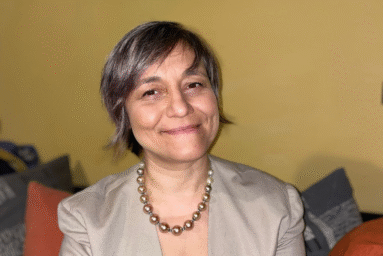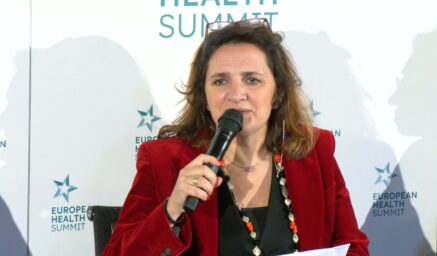The European Environment Agency has drawn a sharp line under the link between dirty surroundings and weak hearts. Cardiovascular disease is Europe’s most frequent killer, and the agency appears determined to bring the numbers down.
The European Environment Agency’s (EEA) latest report, published on Monday 3 November, opens with a stark reminder that life itself is risky. “Environmental factors, such as air pollution, extreme temperatures, and exposure to harmful chemicals, cause around one in five cardiovascular deaths in the European Union—yet, these risks can be prevented.”
The arithmetic of the problem is chilling. “Cardiovascular disease is the main killer in the EU: over 1.7 million people died from it in 2022—one third of all deaths that year.” Beyond the morgues sit the clinics. “Also, more than six million new cases of cardiovascular diseases are diagnosed every year, costing Europe about €282bn.” Europe pays twice, in lives and in cash, for avoidable exposure.
The good news is that the culprits are, in principle, within policymakers’ reach. “The EU’s history of reducing air pollution shows that such policies work: the Union is already on track to meet the zero pollution action plan objective of reducing premature deaths attributable to air pollution by more than 55 per cent, until 2030, compared to 2005.” The study argues that the coming cardiovascular-health plan gives Brussels a chance to weave environment tightly into medicine.
You might be interested
Clearing the air
Europe’s heart burden is not spread evenly. “In the EU, key environmental factors, including air pollution, extreme temperatures and chemicals, are estimated to cause at least 18 per cent of all cardiovascular disease deaths and almost 17 per cent of the cardiovascular burden of disease.” Poorer regions breathe dirtier air and therefore suffer more clogged arteries. Geography determines physiology.
Air fouls hearts most, the report says: “Air pollution causes around eight per cent of the cardiovascular deaths in the EU.” One component alone, microscopic PM2.5, “causes over 130,000 ischaemic heart disease (IHD) and stroke deaths each year.” The agency singles out three villains: “Fine particulate matter (PM2.5), nitrogen dioxide (NO₂), and ozone (O₃) are the three key pollutants linked to cardiovascular disease in Europe.” They inflame tissues, thicken blood and trigger clots.
Long exposure to air pollution contributes significantly to premature mortality and chronic cardiovascular conditions, including heart attacks, strokes and heart failure. – European Environment Agency report
Polluted districts are often hotter, noisier and poorer. Long exposure, says the report, “contributes significantly to premature mortality and chronic cardiovascular conditions, including heart attacks, strokes and heart failure.” The science is no longer contested. What matters now is enforcement of the revised Ambient Air Quality Directive; and money to help towns swap diesel fumes for cleaner transport.
Turn down the volume
Cardiac risk also creeps in on waves of sound. “It is estimated that around 66,000 premature deaths annually in the EU are attributable to transport noise exposure, with more than 30 per cent due to cardiovascular causes.” Roaring roads rob people of sleep and spike stress hormones. Tired hearts tire faster.
Unlike air pollution, noise has barely budged. “Exposure to harmful environmental noise levels has not significantly decreased since 2012.” The agency offers a blunt forecast: “The EU target of achieving a 30 per cent reduction in those chronically disturbed by transport noise by 2030 compared to 2017 is unlikely to be met without further measures.” Quieter tyres, slower streets and more greenery would help.
Action would not only soothe ears. Urban redesign that hushes traffic also clears air and nudges citizens to walk. The briefing is crisp: “Reducing transport noise to achieve the Zero Pollution Action Plan (ZPAP) objectives requires large-scale interventions, stronger regulatory action, improved urban planning and greater awareness of its health impacts.” So far municipal budgets and national zeal fall short.
Toxic traces
Chemicals lurk in air, water and workplaces. “Lead alone accounts for an estimated 2 per cent to 4 per cent of cardiovascular deaths in the EU.” Even low doses, sustained over years, damage arteries. “Exposure to toxic chemicals in the European environment, including in workplaces, also increases the risk of developing cardiovascular disease.” Heavy metals sit alongside solvents and endocrine disrupters.
Worse, scientists see only a sliver of the hazard. The report warns that “we do not have a complete picture of how toxic chemicals affect cardiovascular disease,” noting that “we are likely to significantly underestimate how exposure to chemicals affects the cardiovascular system.” Data on thousands of compounds are missing; test methods miss subtle damage.
The prescription is plain. “Reducing cardiovascular risks from chemicals depends on better enforcing chemical regulations, accelerating the phase-out of cardiotoxic substances and promoting safer alternatives to them.” Beefed-up monitoring and sharper research would show where law bites and where it merely gums.
Climate’s double bind
Heat dehydrates hearts; cold constricts them. “Cardiovascular patients are especially vulnerable to heat, with a 16 per cent increase in the risk of hospital admissions during heatwave days.” Yet numbers show that chill kills even more. “Almost seven per cent of cardiovascular deaths are attributable to low temperatures, an effect far stronger than that of heat.” Energy poverty leaves many Europeans without air-conditioning in summer or warmth in winter.
Current efforts to minimise health impacts, including cardiovascular ones, from exposures aggravated by climate change are insufficient. – European Environment Agency report
Rising temperatures also feed fires and ozone. The agency coolly notes: “Current efforts to minimise health impacts, including cardiovascular ones, from exposures aggravated by climate change are insufficient.” Weather extremes profit from weakness in housing, warning systems and medical preparedness. Climate change is sharpening every edge.
Hence the plea: “Health systems should prepare for and mitigate climatic impacts on cardiovascular health through early warning systems, public health campaigns and targeted support for vulnerable groups.” Linking meteorology with cardiology would alert doctors and patients before heat or frost takes its toll.
A record of mixed success
Europe can point to victories. “The EU is also on track to meet the ZPAP objective of reducing by more than 55 per cent the premature deaths attributable to air pollution by 2030, compared to 2005.” Tight standards, cleaner cars and smokestack filters save lives. The revised directive now requires cities to warn frail residents when pollution looms.
Still, Brussels must watch over towns and lorries. “Effectively implementing the revised Ambient Air Quality Directive (EU) 2024/2881 is crucial for cardiovascular protection.” Pollution must fall to World Health Organisation levels, not merely legal ones. The directive also orders tailored advice for “those with pre-existing health conditions,” a nod to the hearts already in peril.
Public health campaigns can effectively raise awareness about cardiovascular risks from environmental stressors and promote lifestyle changes. — European Environment Agency report
Broader health will come from broader thinking. One sentence captures the spirit: “Urban greening, parks, green corridors and blue spaces reduce cardiovascular risk by improving air quality, reducing noise pollution, reducing exposure to heat, encouraging physical activity and alleviating stress.” Trees do more than shade pavements; they unburden hospitals.
Connecting the dots
The agency presses for a One Health strategy: humans, animals and ecosystems treated as one. That demands alliances between ministries of health, transport, energy and environment. Successes against soot point the way. Failures on noise and chemicals show the costs of delay.
Doctors need new lessons, too. Most medical schools still skim environmental health. The report finds that “about 75 per cent of European medical schools did not cover climate change and health” as recently as 2020. Initiatives such as the Nurses Climate Challenge prove demand is there; curricula must now follow.
Last comes the public. Smoke-free laws, low-emission zones and parklets win votes when citizens see benefits. “Public health campaigns can effectively raise awareness about cardiovascular risks from environmental stressors and promote lifestyle changes.” the report reads. Clear apps already track smog; similar tools could flag noise or heat. Knowledge guides avoidance while policy drives prevention.
Averting another million
Air now kills fewer Europeans than it once did, yet progress risks slowing. Noise blares on. Chemicals mutate faster than regulators respond. Climate stamps old dangers with fresh urgency. Hearts will bear the strain unless politicians twin health with environment.
The European Environment Agency offers a simple verdict in its opening line. The environment breaks hearts. Clean it up, and doctors will have fewer to mend.











